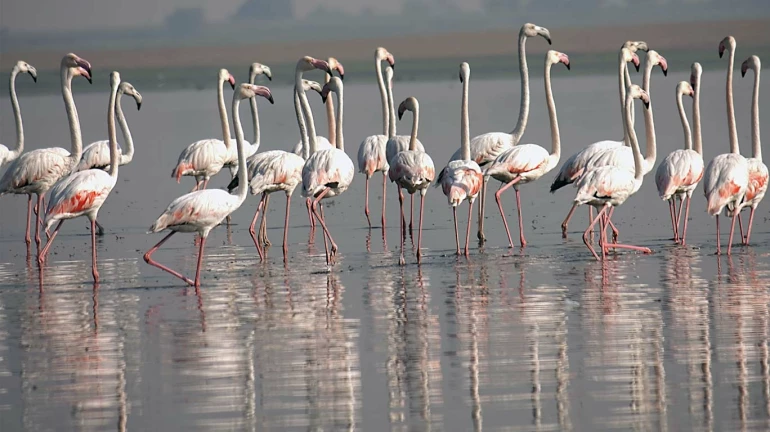
The Bombay Natural History Society (BNHS) keeps a track of migratory birds across 27 sites throughout the city. According to the officials, there has been a considerable decline in the number of Flamingos and other migratory birds visiting the Mumbai Metropolitan Region (MMR) this year.
Most birds have gone to the wetlands along the coast of Gujarat due to presence of favorable ecosystem and presence of food.” BNHS officials told Hindustan Times
The initial count showed 20,000-25,000 birds this year compared to 40,000-45,000 in the previous years, which illustrates a drop of almost 44 per cent. The birds generally migrate to the city from the end of October to early days of May.
Deepak Apte, director, BNHS explained, “This year, by and large, the Flamingo and wader population is very less in Mumbai according to our simultaneous count across wetlands sites in MMR till February. This is because there is a nesting area there, good rains have been recorded last monsoon, and abundant food is available along the Gujarat coast for them. Along with this, various developmental activities and wetland reclamation along Mumbai’s eastern waterfront are further squeezing their population to select locations. Unless we have a blueprint for development and conservation together along these areas, this problem cannot be solved.”
Apte added that Flamingo migrating season is not over and some can even arrive by March end as well. He expected that by late April, the number would go mostly up to 35,000. But he states that if the decline extends to the next year too, then it would be a matter of concern.
Earlier in February, the state mangrove cell began boat rides throughout the creek of Thane to spot Flamingos and other wetland birds. N Vasudevan, additional principal chief conservator of forest, state mangrove cell who had started the boat rides exclaimed, “There has been a marginal increase in numbers since February, which means the birds are still coming!”
As per Vasudevan, Cyclone Ockhi that had hit the Mumbai and Gujarat coastlines could have been a vital factor in their disturbance of migration.
Meanwhile, naturalist writer and ornithologist Sunjoy Monga, says that he has hardly spotted any Flamingos. He also feels the number of 45,000 seemed a bit exaggerated as it had hardly crossed 20,000, as per his observation.





